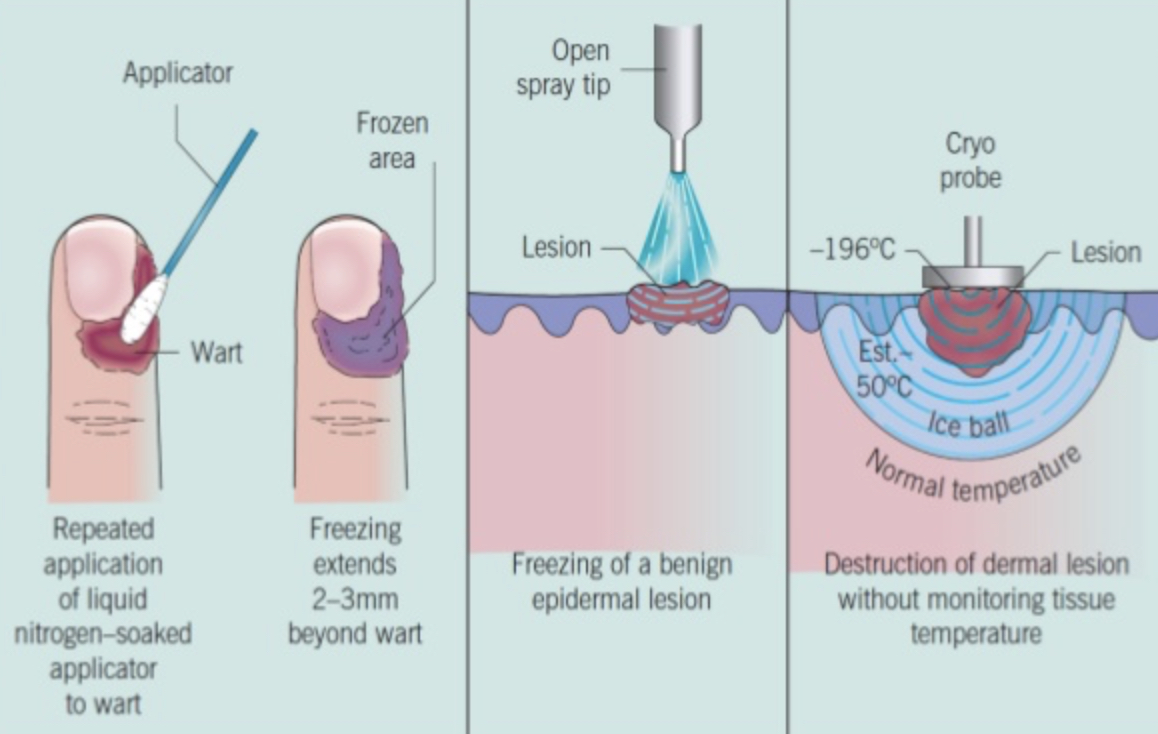Cryotherapy

Cryotherapy for Skin Conditions: Overview, Uses, and Effectiveness
What is Cryotherapy?
Cryotherapy (also known as cryosurgery) is a medical treatment that uses extreme cold, typically liquid nitrogen, to destroy abnormal or diseased skin tissue. It is a minimally invasive, efficient, and widely used dermatologic procedure often performed on an outpatient basis.
Mechanism of Action
- Cryotherapy freezes the targeted skin cells, causing ice crystal formation, cellular dehydration, and disruption of cellular structures.
- This leads to cell death and sloughing off of the treated tissue, followed by regeneration of healthy skin.
Common Skin Conditions Treated
- Benign lesions: Warts, skin tags, seborrheic keratoses, cherry angiomas, molluscum contagiosum.
- Precancerous lesions: Actinic keratoses (AKs) with cure rates ranging from 39% up to 83% depending on freeze time and technique.
- Superficial skin cancers: Selected basal cell carcinomas and squamous cell carcinomas.
- Pigmented lesions: Solar lentigines (age spots), melasma (less common compared to topical therapies).
- Other dermatologic conditions: Molluscum, superficial fungal infections, and some inflammatory skin diseases due to cryotherapy’s anti-inflammatory effects.
Benefits of Cryotherapy
- Rapid and precise treatment with minimal damage to surrounding healthy tissue.
- Minimal downtime, with most patients resuming normal activities shortly after.
- Typically results in low risk of scarring or pigmentary changes when performed correctly.
- Cost-effective and well-tolerated with mild discomfort during the procedure.
- Can be repeated for thick or resistant lesions.
Procedure Details
- Liquid nitrogen is applied by spray, swab, or probe to the lesion.
- Freeze times vary by lesion, typically from 5 to 30 seconds per freeze-thaw cycle.
- One or multiple freeze-thaw cycles are performed depending on lesion thickness and response.
- Treatments are often scheduled 4-6 weeks apart until resolution.
Side Effects and Considerations
- Temporary redness, blistering, crusting, and peeling post-treatment.
- Hypopigmentation or hyperpigmentation, especially in darker skin types or with aggressive treatment.
- Rarely, scarring or secondary infection may occur.
- Not recommended for suspicious melanocytic lesions without biopsy confirmation.
Summary
Cryotherapy is a highly effective, versatile, and widely used treatment for many benign, precancerous, and select malignant skin conditions. Proper patient selection, technique, and follow-up optimize safety and outcomes.
Consult with Our Team of Experts Now!
For accurate diagnosis and personalized cryotherapy treatment plans addressing your skin condition, consult with our trained dermatologists dedicated to advanced, evidence-based skin care.
References:
Singh S, Kaur A. Cryotherapy for Hyperhidrosis: A Review of Current Evidence. J Dermatol Treat. 2024;35(2):112-118. doi:10.1080/09546634.2024.1234567. Available at: https://doi.org/10.1080/09546634.2024.1234567















